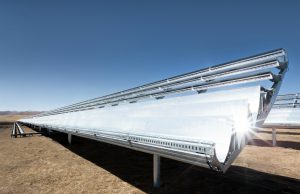This year’s international climate negotiations in Bonn, Germany, were supposed to be about increasing ambition and making progress on issues like finance, adaptation and loss and damage. At COP23 countries need to come together to work out ways to reduce greenhouse gas emissions faster. A new report from the United Nations Environment Program has highlighted that we risk three degrees of warming by century’s end unless countries act more quickly.
Instead, President Donald Trump has thrown a spanner in the works by announcing his intent to withdraw from the Paris Agreement. The US is the largest single contributor to climate change, so this looks like a real problem. But what does this actually mean?
For starters, the United States hasn’t actually withdrawn from the Paris Agreement, yet. The earliest they can do so is likely to be at the beginning of November 2020. This happens to be when President Trump is up for reelection and, if he runs again, he’ll almost certainly face a challenger who is for climate action.
US climate negotiators will still be present in Bonn but it's not clear what role they’ll play. Given Trump’s hostility to climate action and fondness for coal, it’s unlikely to be productive. It’s believed that the Trump administration will use the negotiations to emphasise the importance of continuing to use coal, natural gas and nuclear energy, two of which are major contributors to greenhouse gas emissions.
And we know that President Trump has been hostile to the Green Climate Fund, which supports developing nations to respond to climate change, saying it was “costing the United States a vast fortune” of “billions and billions and billions” of dollars.
In reality US contributions to date have been much smaller, totalling US$1 billion (6.6 billion yuan) out of a total pledge of US$3 billion (20 billion yuan). It’s unlikely that more funds will be forthcoming in the near future, which will anger some developing nations that had already accused the US of not paying its fair share.
But there are reasons to be hopeful that the US can play a productive role in Bonn and beyond. Every other level of the US government will be represented and for the most part they’ll be there to show their commitment to the pledge the US made in Paris.
Back home, thousands of mayors, governors, tribal leaders, CEOs, and regular Americans are working to reduce greenhouse gas emissions. These parallel efforts, and a coalition called We Are Still In, represent more than half the US population and 54% of US economic output. California Governor Jerry Brown and Michael Bloomberg have now launched an initiative to compile and quantify these actions, with the aim of ensuring that the US achieves the reduction in carbon emissions it pledged under the Paris Agreement.
They have political and economic incentives to do so. Polling shows that Americans strongly support the Paris Agreement and developing clean energy. The clean energy industry is booming, with solar photovoltaic installers and wind turbine service technicians the two fastest growing jobs in the country.
Polling shows that Americans strongly support the Paris Agreement and developing clean energy
There are other incentives to act. The new US National Climate Assessment, finds that climate change is already amplifying extreme weather such as hurricanes Harvey, Irma, and Maria, and wildfires like those in California.
This hurricane season is expected to be the costliest in history, and a recent report from the Government Accountability Office has shown that the US stands to suffer billions more climate-related costs, potentially reaching US$35 billion (232 billion yuan) a year by 2050. The Mayor of San Juan, which was devastated by Hurricane Maria, is likely to attend the conference, and make the case for the US to play its part in fighting climate change.
In the absence of US leadership in the negotiations, other actors are likely to step up. President Xi recently renewed China’s commitment to climate action and the Paris Agreement. But there are limits to the role China can play as it is not classified as a developed country. Under normal circumstances the European Union would be expected to provide leadership in Bonn, but ongoing German coalition negotiations and Brexit may limit its ability to do so.
Ultimately to stop dangerous climate change, the US will need to meet and probably exceed its Paris targets. The efforts of cities, states and businesses are to be welcomed and can make a real difference. But the sooner the federal government is back, engaged and serious about its international commitments, the better.









